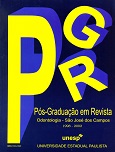Contatos proximais em restaurações de resina composta: avaliação de técnicas e materiais
DOI:
https://doi.org/10.14295/bds.2000.v3i2.90Abstract
O objetivo deste estudo foi avaliar a qualidade do contato proximal obtido após a realização de restaurações classe II em resina composta. Cavidades proximais foram preparadas em 50 premolares hígidos, utilizando a ponta ultra-sônica SONICSYS-approx tamanho 2. Todos os dentes receberam o mesmo tipo de matriz ecunha e foram divididos em cinco grupos de acordo com o material e técnica restauradora aplicada: A – Z100 por técnica incremental, B – Z100 + “pérola” de resina pré-polimerizada, C – Definite, D – SONICSYS-inlays, E – liga de amálgama Permite (grupo controle). A qualidade do contato foi verificada medindose, através de um dinamômetro, a força necessária para um fio dental transpor o contato. As medições foram realizadas antes do preparo cavitário e após o término das restaurações. Os testes t (Student), Levene, ANOVA e Tukey foram aplicados aos dadosobtidos. Os resultados mostraram que nenhum dos materiais estéticos testados proporcionou contatos tão fortes quanto o amálgama. A resina Z100 aplicada por técnica incremental apresentou o pior desempenho, enquanto que as “pérolas” de resina e a resina condensável Definite mostraram-se mais favoráveis que a primeira. A utilização das inlays pré-fabricadas SONICSYS, cimentadas nos preparos padronizados, mostrou-se a técnica mais favorável para a reprodução dos contatos interdentais.
Downloads
Downloads
Published
How to Cite
Issue
Section
License
Brazilian Dental Science uses the Creative Commons (CC-BY 4.0) license, thus preserving the integrity of articles in an open access environment. The journal allows the author to retain publishing rights without restrictions.
=================




























